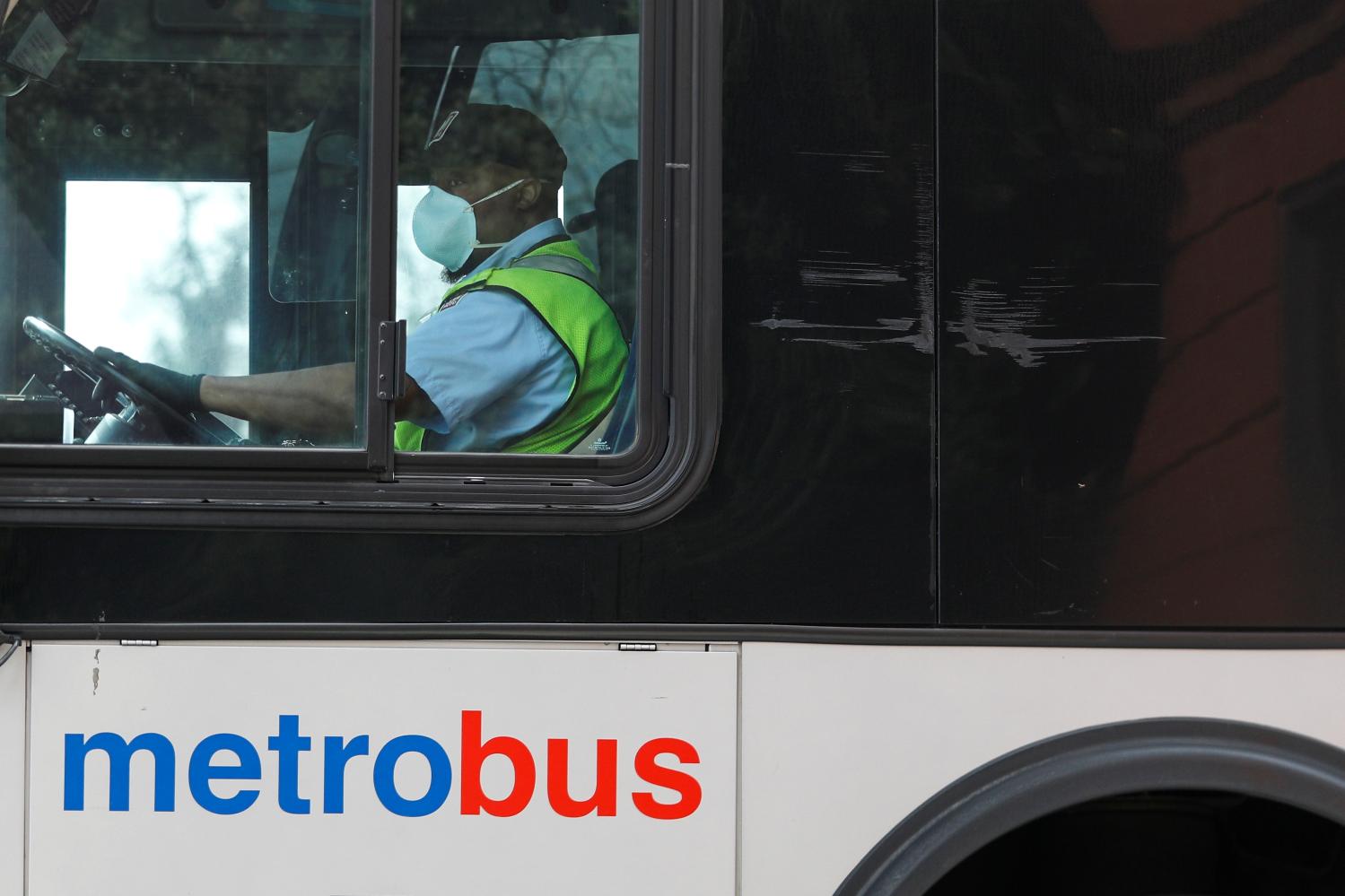The coronavirus pandemic seems likely to trigger a severe worldwide recession of uncertain length. In addition to responding to the public health needs, policymakers are debating how they can respond with creative new economic policies, which are now urgently needed.
One strategy they should consider is both traditional and yet oddly missing from the current discussion. This response would leverage a sizable surge of federal aid to state and local governments (now conspicuously absent from federal stimulus packages) to help counter the pandemic’s coming negative impacts on the hardest-hit regional economies.
To help these places, we suggest three federal actions. First is urgent and immediate federal aid, targeted to the most needy state and local governments to help maintain or expand vital services during the initial phase of the crisis. Second is extra help for the most distressed local labor markets to encourage employers to expand jobs once the worst of the pandemic is over. Finally, we must use targeted retraining for workers in distressed local labor markets to help ease the adjustment into what will be a changed world once the immediate crisis recedes.
We hasten to add that dealing with regional problems is not the only needed economic policy. We also need creative macroeconomic policies, income support policies, and national labor market policies.
The road to recovery isn’t easy
The pain of recessions does not hit all areas equally. Even if it is relatively short, the upcoming pandemic-fueled recession seems likely to especially damage local economies tied to tourism, travel, and energy—think Seattle (where Boeing has a big presence) and Dallas (with its large oil industry). As with many recessions, manufacturing-intensive economies are also at high risk, including auto-based economies in Michigan.
Some may assume that the areas hardest hit from a recession also bounce back the most. However, prior studies show this does not appear to be the case. As several of us have written, rapid recoveries among regions no longer seem wired into our economy.
Research by two of us (Hershbein and Stuart) shows that communities more severely affected during recessions continue to suffer relative to less-affected areas for at least a decade afterward. These hard-hit areas experience larger relative losses in employment, population, and earnings, and the share of their population with jobs also falls.
An area that lost 5% of its employment—about the typical loss during the Great Recession—showed a 6.2% loss in employment (relative to what would be expected without the recession) even seven to nine years after the recession ended. Population also falls, but by less, such that the employment rate—the share of people with a job—declines by about 2 percentage points. In a community with 200,000 people of working age (about the median for U.S. metro areas), this implies an additional 4,000 people out of work, even years after the recession.
This pattern has followed every recession over the last 50 years, and these long-lasting effects are consistent with other research on how local job changes affect employment rates. Even if the coronavirus recession is unique in many aspects, these same durable impacts on local areas are likely.
Recessions have long-lasting local consequences
Are lengthy consequences inevitable for the coronavirus recession, or for any other recession? Not necessarily. But without appropriate policy responses, there are important economic forces that link temporary economic pain to permanent regional harm.
When a local economy suffers a severe recession and more workers become unemployed for longer periods, these workers can lose skills and other characteristics that make them employable when conditions improve. Unemployed workers not only lose skills at job-related tasks from lack of use, they also may suffer more from substance abuse, mental illness, lack of self-confidence, and family breakups. These factors all can hurt an individual’s long-run economic prospects.
Serious recessions also lead many local governments into fiscal problems. By law, state and local governments must balance their budgets. Declines in revenues caused by recessions either lead to tax increases or, more likely, cuts in public services. These cuts tend to affect amenities such as schools, parks, roads, and responsive services, which make the area less attractive to workers and businesses. The economic climate of the local economy subsequently deteriorates, reducing long-term economic output.
Some people—although not that many—will move out of distressed local economies. But this still does not help those left behind. When people move out, people and jobs tend to fall one-to-one. Out-migration reduces local consumer demand and possibly housing wealth as well, through a drop in home values. Since the people who leave also tend to be younger, more educated, and more entrepreneurial, out-migration further depresses long-run local economic growth.
Steps to reduce the damage
Ameliorating these effects requires directly addressing them at a local level, with federal help. Three types of funding seem essential:
Aid to help state and local governments maintain or expand needed services during the initial crisis. Federal aid to state and local governments—targeted at the hardest-hit local areas—can help prevent excessive spending cuts. This federal aid directly preserves local jobs in the short run and makes the local economy more attractive for economic growth in the long run. This aid must be large enough to meet what could be a once-in-a-century shock to the economy. During the Great Recession, emergency federal aid to state and local governments peaked at over $120 billion, but even that did not fully mitigate state and local fiscal crises. Addressing the current challenge will require much greater amounts of emergency aid: roughly $500 billion over the next two years, we estimate, albeit with substantial targeting to the most-affected places. Annual state and local general revenue (not counting money from the federal government) is about $2.4 trillion; $500 billion seems a minimal estimate of this pandemic’s fiscal effects over two years on state and local governments.
Help for the most distressed local labor markets to encourage employers to hire as the pandemic recedes. Federal aid can also encourage local private job growth. Tax credits for payroll expansion during a recession should be directed at areas with the sharpest rise in unemployment. For example, one of us (Bartik) has proposed that the current crisis could be alleviated—at least partially—by a 15% tax credit to all employers for the costs of maintaining jobs in excess of 90% of the employer’s 2019 level. (For the hardest-hit regions, this credit should be increased to 30%.) We recommend targeting hard-hit counties, potentially based on the county employment to population ratio for people ages 25 to 54, a widely accepted measure of local labor market distress. The 15% national credit, plus a higher 30% credit for the fifth of counties that are most distressed, would have annual costs of around $200 billion. We believe this credit would increase the odds that national job creation and regional job creation in the hardest-hit areas would more quickly recover from the coronavirus recession.
Targeted retraining to promote worker adjustment for the next era. Federal aid should also help people acquire job skills that are growing in importance. A severe local recession is actually a good time to invest in job skills, and some of our research shows such skill investment will be badly needed. Areas with the most severe recessions should receive federal funds to expand job training, education, and career guidance, so that unemployed workers can retool their skills for jobs that will be recreated when the economy recovers. One comparison is the Post-9/11 GI Bill, which provides education benefits to about 750,000 individuals per year at an average cost of $15,000 per person. If 1 million individuals received similar funding, the cost would be $15 billion per year. The selection of targeted areas can be based on existing local training areas defined under federally funded training programs.
We need to act now
Time is of the essence. Local economic decline can accelerate through feedback effects; in past recessions, job decline in badly affected areas a decade after the recession has been 25% larger than the decline during the recession. Providing rapid assistance to individuals and businesses can help arrest this decline before it builds on itself.
Even before this coming recession, the U.S. already had a severe problem with regional economic divergence. Some areas had far fewer employment opportunities than others, with about 15% of the U.S. population living in places where employment rates among 25- to 54-year-olds was at least 5 percentage points below the national average.
We need to help these distressed places with long-term federal aid to boost their employment rates. And right now, we need to adopt policies to prevent even more areas from suffering permanent declines. Let’s think big and provide a variety of flexible aid to the hardest-hit local economies. In the short term, this is humane; in the long term, it is vital.
The Brookings Institution is committed to quality, independence, and impact.
We are supported by a diverse array of funders. In line with our values and policies, each Brookings publication represents the sole views of its author(s).










